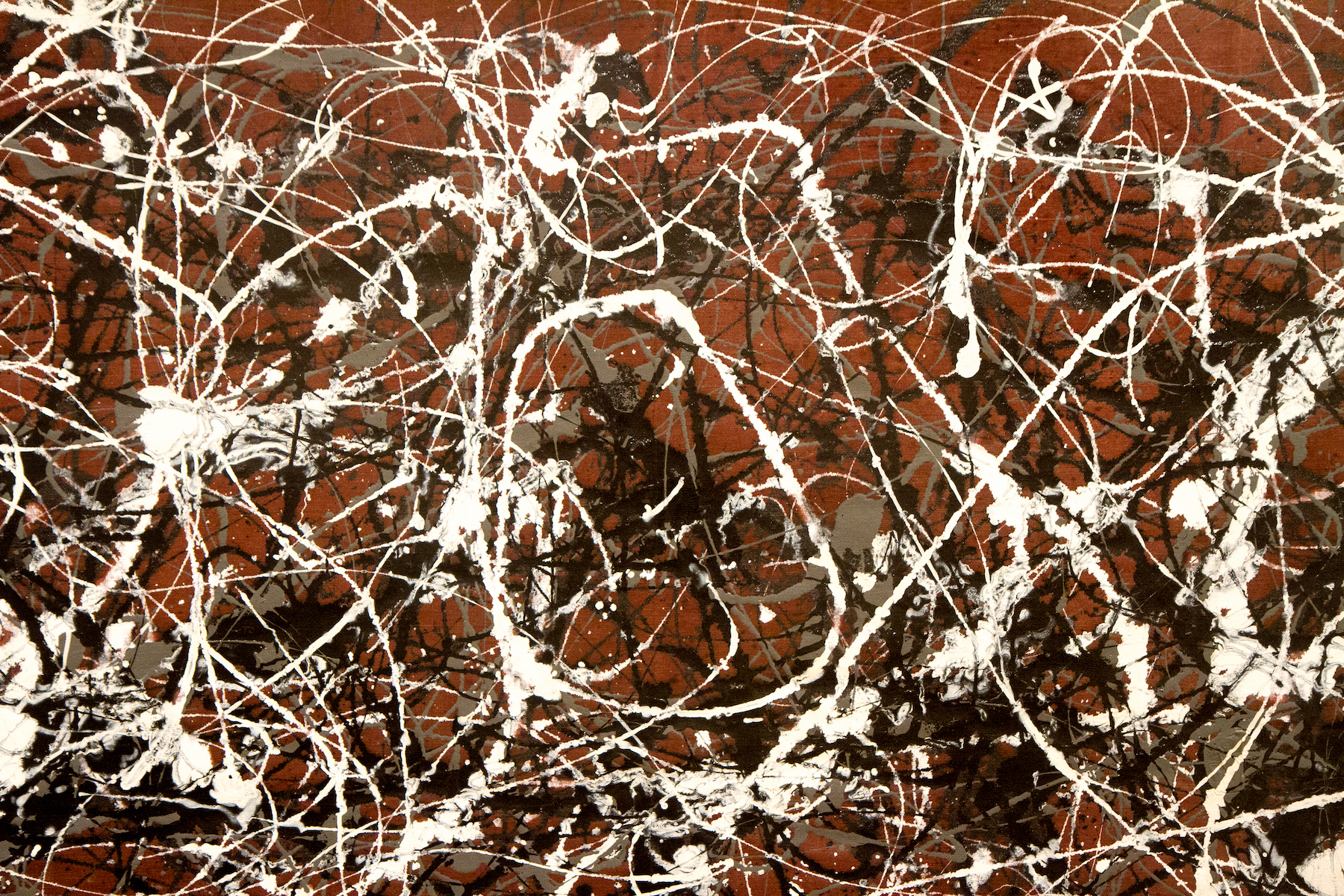
Courtesy of Garrett Ziegler
Amid the footsteps and murmurs of conversation that shift around the space, bouncing off walls and around corners, I hesitate. I step forward, turn around and consider asking a security guard for permission to sit. After deciding not to, I place myself cross-legged on the ground of the wood floor in the middle of the Modern and Contemporary Art exhibit on the third floor of the Yale University Art Gallery.
American artist Jackson Pollock’s “Number 13A: Arabesque” (1948) draws my attention. I’ve always taken an interest in Pollock’s art, yet have never seen it in person. During his lifetime, critics constantly dismissed Pollock’s work as arbitrary and worthless, as nothing more than splattered paint on a canvas disguised as art. Later, often when trying to authenticate potential Pollocks, further analysis revealed that his paintings were in fact characterized by predictable fractal patterns, fractals being relatively simple patterns nested and iterated ad infinitum to create complex geometric shapes such as snowflakes or coastlines. The fractal properties of Pollock’s art exhibit a sort of “order in the chaos” of his trademark “drip” technique, in which paint is flung, dripped and poured onto a canvas.
I swivel around to face the long rectangular canvas set against a blank bright-white wall. It is an intertwined maze of black, then gray, then white, thick in some places, thin in others, the dots and blotches and lines at once flowing and viscous. Every fresh glance throws me into the world of the painting and leads my eyes down a different path, my gaze gliding and lurching around the canvas. I get stuck in a circular loop in the center of the painting and find an escape again — an endless network without start or end.
You know how we humans gravitate to searching for patterns and pictures in what seem to be nothing but nonsense? We look for animals in the clouds and people in the stars — we try to regulate what, maybe, shouldn’t be regulated. To me, looking for patterns in Arabesque reminds me of our ceaseless attempts to stuff our lives into neatly packaged drawers. The haphazardness of the Pollock painting isn’t organizable, yet we perform fractal analysis on it and follow its nested lines with our eyes in search of a destination.
I’m inspired also by the improvisational nature of the piece. As a classical musician, I’m accustomed to playing notes from a page of clearly structured music. Any deviation from what’s essentially planned is a “mistake.” Pollock’s painting style opens a fresh perspective that allows us to explore and shift and mold our plan — if we had one in the first place — in a novel way that’s praised as creative instead of critiqued as wrong.
And so we drift on through this painting, dancing on spinning sand in the American southwest, where we follow the windlike patterns of Pollock’s hardened paint brush, at peace with the certain impossibility of knowing where our journey will end.
Arabesque — a title likely created by Pollock’s friends, according to the YUAG website — can refer to both an interlaced geometric pattern of lines or a ballet pose in which a dancer balances one one leg and stretches the other out horizontally. Pollock’s take on the arabesque takes inspiration from Navajo sand paintings — paintings which are inherently geometric in nature and serve to connect humans with larger spiritual subjects and gods. By encapsulating the coexistence of our desire for order and our primal yearning for chaos, Pollock captures a fundamentally human thought process through his black, gray and white drips of paint.
I notice that the edges of the painting remain noticeably sparser than its interior. I tilt my head back to look up at the ceiling. It’s as white as the wall, and I’m playing with vision, letting my eyes take my thoughts in all directions at once.
A security guard approaches me and says, “I can offer you a chair, but you can’t sit on the floor like that.” Something about the feeling that an object lies beyond my reach, towering over me gives me a sense of security. But I comply. I stand up, finish typing my sentence while half-squatting and leave the gallery.
Phoebe Liu | phoebe.liu@yale.edu .







